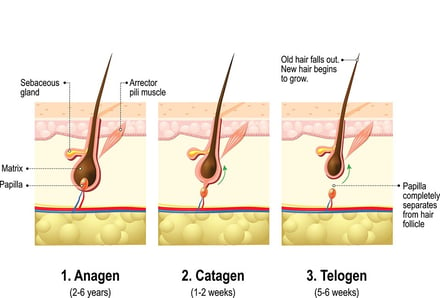Understanding Hair Follicle Growth Stages: Identifying Permanent and Mature Hair
Learn about hair follicle growth stages, and how to identify permanent and mature hair. Understand the key phases for healthier, fuller beard growth and how to spot thicker, more resilient facial hair.
Day Williams
1/2/20252 min read


Introduction to Hair Follicle Growth
The human body is home to millions of hair follicles, each experiencing its own growth cycle. Understanding the stages of hair follicle growth is crucial for recognizing the differences between types of hair.
The Three Stages of Hair Follicle Growth
Hair growth occurs in three primary stages: anagen, catagen, and telogen. Each phase plays a vital role in the lifecycle of hair follicles.
Anagen Phase: The anagen phase is the active growth stage of hair follicles. During this time, hair strands can grow for several years, with an average growth rate of about half an inch per month. The length of this phase varies between individuals depending on genetics and various health factors.
Catagen Phase: Following the anagen phase is the catagen phase, which lasts approximately two to three weeks. During this transitional phase, hair follicles shrink and detach from the dermal papilla, the area where hair receives nutrients. As a result, hair growth ceases, and the hair strand becomes a club hair, eventually leading to the next phase.
Telogen Phase: The final stage is the telogen phase, where the hair follicles enter a resting period that can last for several months. At this point, the club hair remains in the follicle until it sheds, making way for new growth as the cycle starts again back at the anagen phase.
How To Identity Permanent/Mature Hair
Permanent and Mature hair follicles typically develop during the anagen phase.
Characteristics of Permanent Hair: Permanent hair is characterized by its thickness and strength. It remains anchored in the follicle and usually has a longer anagen phase, allowing for significant growth over time. This type of hair generally does not shed unless mechanically removed or influenced by hormonal changes.
Mature Hair Features: Mature hair is often thinner and finer compared to permanent hair. Its growth phase is not as prolonged, leading to a weaker attachment to the follicle. Mature hair may shed naturally, making way for the growth of new hair. It is very soft and less durable than permanent hair.


